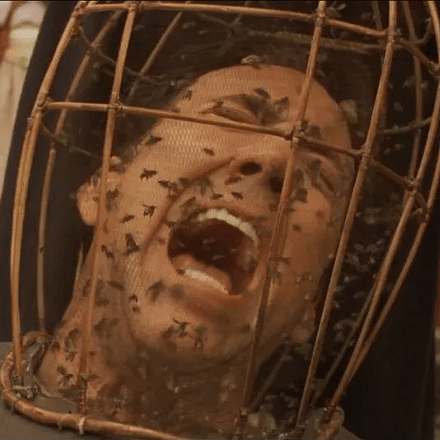Fans of films that leave them exhausted, wowed, moved and maybe a little befuddled, need to see this one on opening day, if only so they can see it again soon.
I walked in to Cloud Atlas with little knowledge of what was to come. I’d never heard of David Mitchell’s 2004 novel, nor had I seen any trailers for the film. All I knew was that the Wachowskis, who made the Matrix trilogy, had teamed up with Tom Tykwer, who made Run Lola Run, to co-direct it.
With those filmmakers in my head, I prepared myself for something visual, perhaps visceral. Oh, I got that! But for almost three hours — three mesmerizing hours — I also got a big, swirling masterpiece of a movie that works brilliantly as thriller, romance, historical drama, sci-fi epic, philosophical treatise on the human condition.
It consists of six separate stories, set in different time periods (from 1849 up through “106 years after the Fall”) and different locales (from London to Korea). The stories all stand on their own, yet they also dovetail, sometimes literally. A door will close during one of them, and a similar door will open in another.
Becoming befuddled yet? Here’s more: All of the characters, if you buy the book/film’s basic premise, share some sort of universality, suggesting that everyone and everything is related to everyone and everything, that we all somehow maintain a common bond. That our decisions today impact future generations.
Within this structure, there’s also a fluidity of race and age and gender. And, oh yeah, just like in Lindsay Anderson’s fabulous 1973 film, O Lucky Man!, there’s some mighty odd dallying with the cast. Most of the actors have multiple roles. I’m not sure if I kept accurate count, but I believe Tom Hanks, Halle Berry, Hugh Grant, and Wachowski favorite Hugo Weaving (Agent Smith in the Matrix series) play six parts, Jim Broadbent plays five, and various other actors play various others. Some men play women, and vice versa. Let’s hear it for the makeup department and for actors successfully tackling differences in vocal delivery and body language. Hot tip: Wait for the end credits for a visual explanation of who each actor was portraying.
Astute readers will note that I haven’t revealed anything about the film’s many plots. There’s a South Seas voyage, a tale of a perplexed book publisher, one about a decrepit old composer and his amanuensis, an exploration of scientific ethics, some dastardly business about the future of energy, a look way into the future and plenty more.
The stories are terrific, the acting is great. But it’s the film as a whole that will grab you, get you to thinking about the cosmic scheme of things, where we’ve been, where we’re going. Most important, it’s also vastly entertaining.
Even if you’ve read the book and seen the trailer, the movie is going to be a challenge, but one that you’ll be rewarded for taking. The challenge is there only until you get into the rhythm of what’s going on. You just have to let go, to go with the flow of it. Don’t worry about being able to watch one story, jump to another one, flip over to a couple more, return to one, get back to another.
There are dramatic character arcs among the stories, a wild mix of action and visual effects that, when called for, is furious, and even a couple of great head butts. I saw the film a month ago, then read the book, then saw the film a second time. And I’m ready to go again.
















